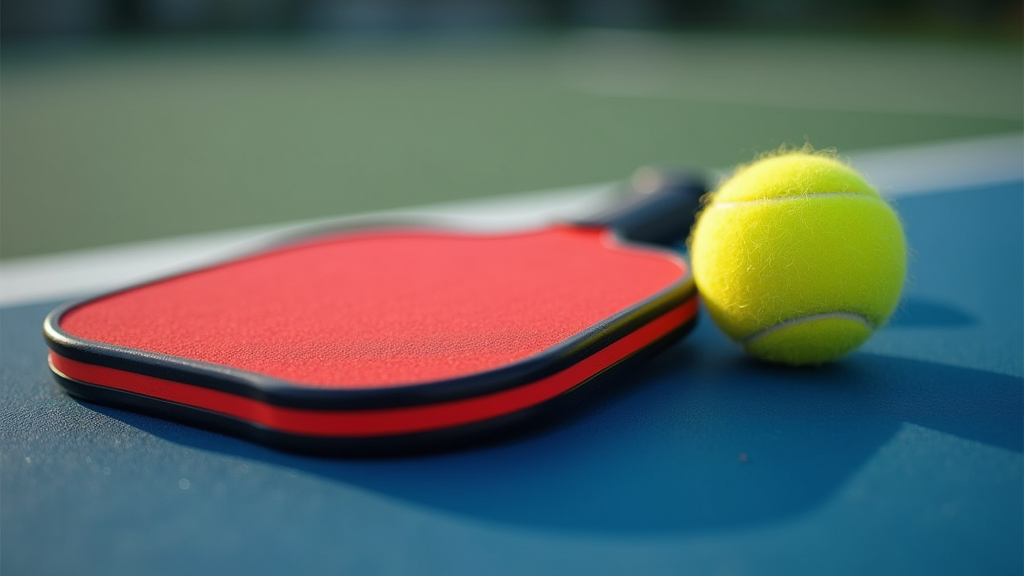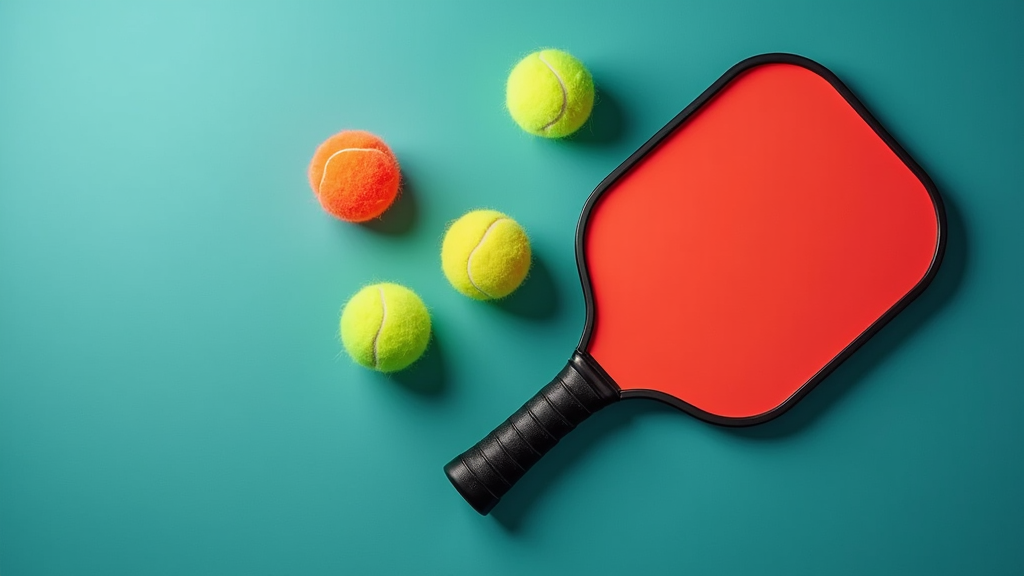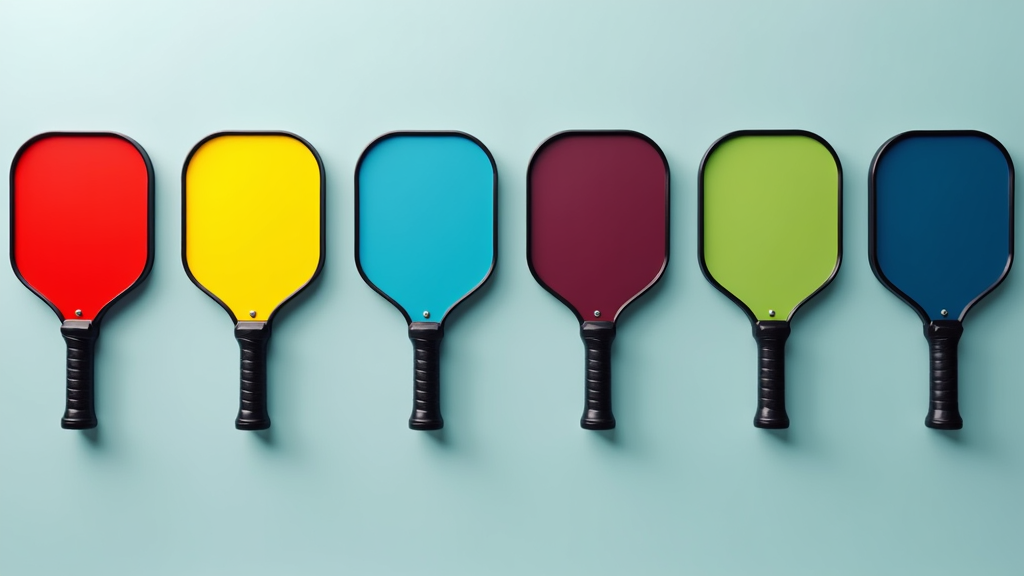Table of Contents
- Understanding Pickleball Paddle Surface Roughness Outline
- Understanding Pickleball Paddle Surface Roughness Basics
- Defining Pickleball Paddle Surface Roughness Metrics
- Core Principles of USAPA Paddle Roughness Rules
- Essential Elements of USAPA-Approved Pickleball Paddles
- Key Features Influencing Paddle Surface Texture
- Secondary Considerations for Optimizing Paddle Performance
- Important Variations in Pickleball Paddle Dimensions
- Understanding Pickleball Paddle Surface Roughness Outline
- Pickleball Paddle Surface Roughness Outline: Key Takeaways
- Concluding Thoughts on Pickleball Paddle Surface Roughness Outline
- Further Research on Pickleball Paddle Surface Roughness Outline
Understanding Pickleball Paddle Surface Roughness Outline
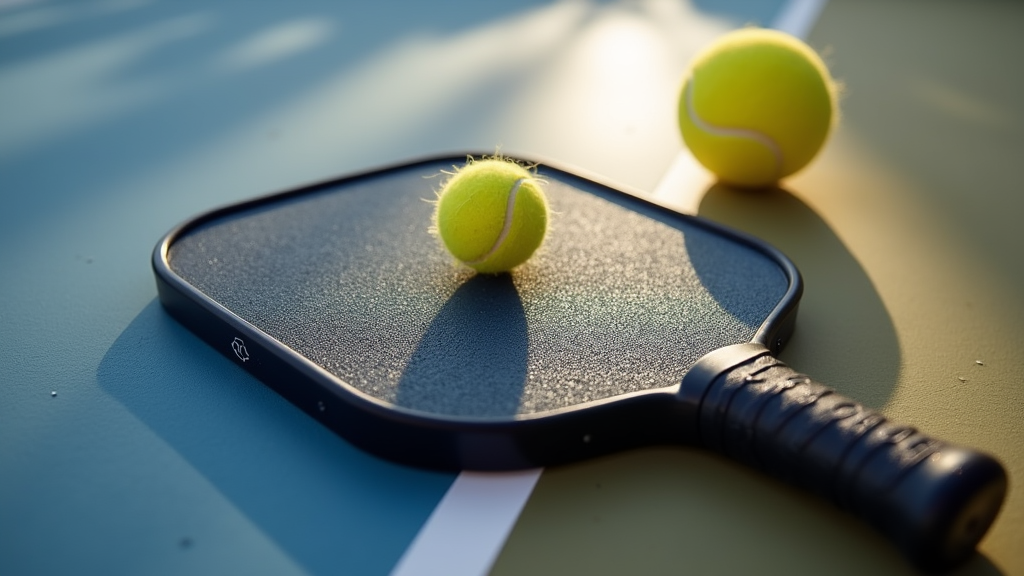
Importance of Pickleball Paddle Surface Roughness
Pickleball paddle surface roughness significantly influences gameplay and adherence to USAPA regulations. These rules are in place to promote fair competition by controlling the amount of spin players can generate.
Key facts to consider:
- Maximum Rz reading: 30 micrometers (μm)
- Maximum Rt reading: 40 micrometers (μm)
Compliance with USAPA standards is crucial for tournament participation, as surface roughness directly affects the ball’s spin and speed.
Historical Context of Paddle Roughness Regulations
The USAPA first introduced regulations concerning paddle textures in May 2016. Since then, there have been ongoing developments, including continuous testing and refinement of these standards.
Discussions continue regarding the actual effect of surface roughness on ball spin during real-world gameplay situations.
Key Learning Objectives for Paddle Surface Roughness
This guide will cover several core concepts including USAPA regulations for paddle surface roughness, measurement techniques, and how surface roughness impacts ball spin. We’ll also discuss what constitutes a legal modification versus a prohibited alteration.
You’ll gain practical knowledge to select USAPA-approved paddles, understand the implications for competitive play, and customize paddles while staying within legal boundaries.
Understanding Pickleball Paddle Surface Roughness Basics
Defining Pickleball Paddle Surface Roughness Metrics
Surface roughness, crucial in pickleball paddle performance, is quantified using metrics like Rz and Rt. These measurements capture the height differences between peaks and valleys on the paddle’s surface.
The Coefficient of Friction (COF) measures the resistance encountered when two surfaces slide against each other, directly impacting ball spin and control.
Core Principles of USAPA Paddle Roughness Rules
USAPA regulations regarding paddle surface roughness are designed to ensure fair play and prevent any player from gaining an undue advantage. These rules promote equitable competition and accessibility for all players.
The primary goal is to maintain a level playing field where skill and strategy are the deciding factors, not equipment manipulation.
Essential Elements of USAPA-Approved Pickleball Paddles
To be compliant, a pickleball paddle must be USAPA-approved and adhere to specific surface roughness guidelines. This ensures that the paddle meets the required standards for legal play.
Key Features Influencing Paddle Surface Texture
Several factors contribute to a paddle’s surface texture, including the material used (graphite, wood, composite) and the specific surface finish applied during manufacturing. These aspects directly impact the paddle’s grip on the ball.
Secondary Considerations for Optimizing Paddle Performance
Beyond surface texture, grip type and size, as well as the edge guard and butt cap, play a role in overall paddle performance and feel. These secondary aspects contribute to a player’s comfort and control.
Important Variations in Pickleball Paddle Dimensions
Paddle dimensions, including length, width, and thickness, along with core material and construction, vary widely and affect the paddle’s responsiveness and power. Players should consider these variations when selecting a paddle that suits their playing style.
Understanding Pickleball Paddle Surface Roughness Outline
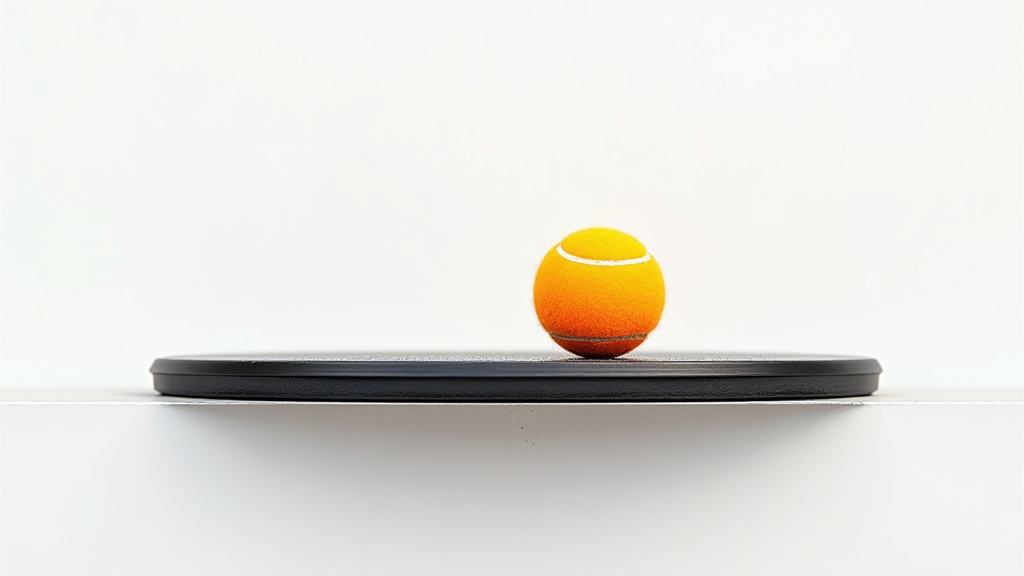
USAPA Rules on Pickleball Paddle Roughness Limits
The United States Pickleball Association (USAPA) sets a specific allowable roughness limit for pickleball paddles to ensure fair play. This limit is set at no greater than 40 micrometers on average. This regulation is in place to prevent paddles from excessively influencing the ball’s spin and speed, which could give players an unfair advantage.
To ensure compliance, roughness measurements are meticulously taken across six different directions on what is determined to be the roughest area of the paddle. A trained laboratory technician identifies this area for testing. The measurement itself is conducted using a precise instrument, the Starrett SR 100 Surface Roughness Tester.
The primary reason for this regulation is to maintain the accessibility and integrity of the game. By limiting surface roughness, the USAPA aims to prevent players from using extreme texture-induced spin to gain a disproportionate advantage over their opponents.
Pickleball Paddle Modifications: What’s Allowed and Prohibited
Modifying a pickleball paddle is a common practice, but it’s important to understand what modifications are allowed and which are prohibited under USAPA regulations.
Increasing the surface roughness of a pickleball paddle is strictly prohibited. This includes adding textured materials or altering the surface in any way that would make it rougher. Materials such as textured surfaces, synthetic rubber, sandpaper, and any other roughening agents that could alter the ball’s movement are not permitted.
Any modifications that allow players to gain extra spin or increase the ball’s bounce are also not allowed. This includes homemade paddles or materials that enhance ball spin or speed, which are not permitted in professional play.
However, some customizations are allowed. Modifications can be made to the grip, including adding or changing existing grips to fit personal preference. Adding weight to the paddle is also permissible, and this is typically achieved using lead tape or electrical tape applied to the paddle’s frame, edge guard, or handle.
Personalizing the paddle with non-reflective paint, names, or designs is allowed, provided they do not distract opponents or reflect light in a way that could be annoying. Paddles must be made of rigid, non-compressible materials such as graphite, wood, or composite.
The total length and width of the paddle, including the edge guard and butt cap, must not exceed 24 inches, with the paddle length limited to 17 inches. There are no restrictions on paddle thickness. Non-reflective paints and substances are permissible, ensuring they don’t negatively affect visibility for opponents.
Exploring Coefficient of Friction (COF) and Spin Dynamics
The coefficient of friction (COF) between pickleball paddles and balls significantly influences the spin imparted on the ball during play. Experiments have shown that the COF affects rebound spin, with different angles of impact leading to either a grip or slide effect during the ball-paddle collision.
The transition from sliding to gripping is determined by a specific slide-grip transition angle. When the angle of impact is greater than 45 degrees from the paddle surface, the ball tends to grip the paddle, achieving the maximum possible spin regardless of the paddle’s COF. However, when the angle is less than 45 degrees, the ball slides on the paddle surface. In this slide range, paddles with a higher COF produce more spin, although not as much as when gripping.
In the grip range, all paddles, irrespective of their COF, produce approximately the same spin. Conversely, in the slide range, paddles with higher static COF generate more spin.
Static friction, which resists the initiation of sliding, is used to determine the COF. The static COF is measured using an incline bench and paddle setup, with specific equations and testing protocols to ensure accuracy.
Pickleball Paddle Surface Roughness Outline: Key Takeaways
Recap of USAPA Rules on Paddle Roughness
**Research Finding:** Understanding USAPA’s paddle roughness regulations is crucial for competitive pickleball players; exceeding the limits provides an unfair spin advantage and leads to disqualification. While modifications are allowed, players must ensure surface alterations remain within the permitted range to maintain fair play and competition legality.
Understanding and adhering to the USAPA regulations regarding pickleball paddle surface roughness is crucial for competitive play. These rules are in place to ensure fair gameplay and prevent any unfair advantage gained through excessive spin.
Surface Roughness Impact on Spin and Play
Surface roughness significantly impacts the amount of spin you can impart on the ball. A rougher surface generally allows for more spin, which can influence ball trajectory and bounce. However, exceeding the USAPA limits can lead to disqualification.
Permitted Paddle Modifications and Customizations
While some modifications and customizations are allowed, it’s important to be aware of the legal boundaries. Altering the paddle surface to exceed the roughness limits is prohibited and can result in penalties during tournaments.
Concluding Thoughts on Pickleball Paddle Surface Roughness Outline
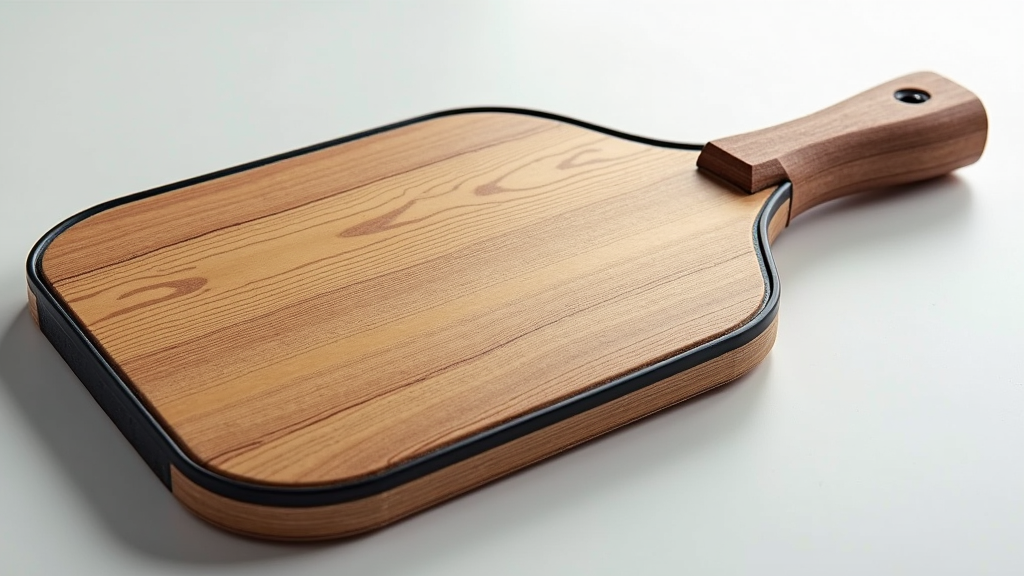
Choosing USAPA-Approved Paddles for Tournament Play
New players who are considering competitive play should prioritize purchasing USAPA-approved paddles. This ensures that your equipment meets the required standards and avoids any potential issues during tournaments.
Regularly Checking the USAPA Approved Paddle List
The USAPA website maintains an updated list of approved paddles. It’s recommended to regularly check this list to ensure your paddle remains compliant with the latest regulations.
Staying Informed About Paddle Customization Legality
Always be aware of the legal boundaries when it comes to paddle customization. While personalization is encouraged, modifications that alter the surface roughness beyond the allowed limits are strictly prohibited.
Further Research on Pickleball Paddle Surface Roughness Outline
USAPA Website: Rules and Referees Section
The USAPA website is the definitive source for all rules and regulations, including those pertaining to paddle surface roughness. The Rules and Referees section offers detailed information and clarifications.
Official List of USAPA-Approved Pickleball Paddles
The USAPA provides a comprehensive list of approved pickleball paddles. This list is regularly updated and is an invaluable resource for players looking to purchase compliant equipment.

